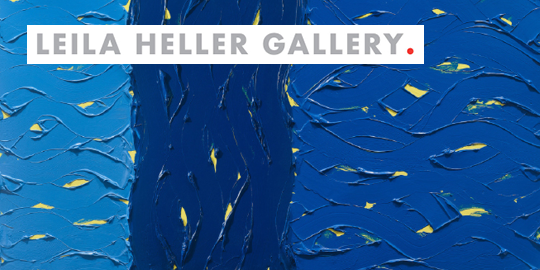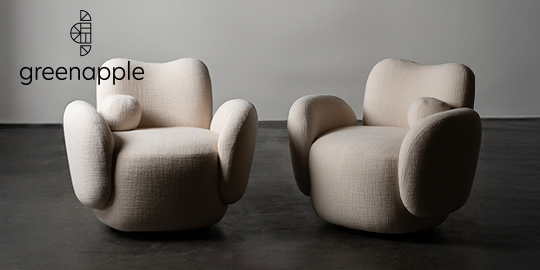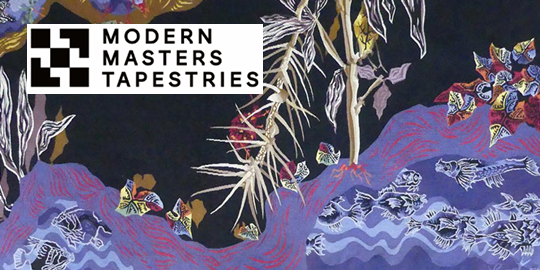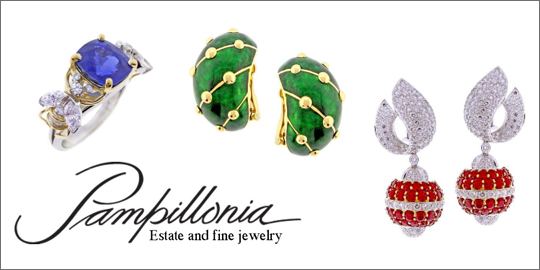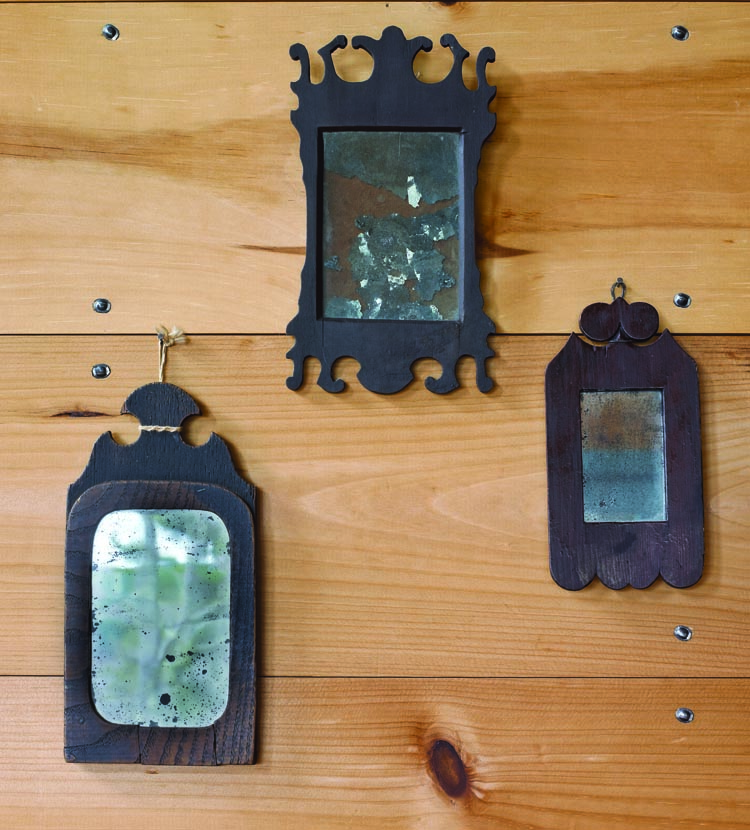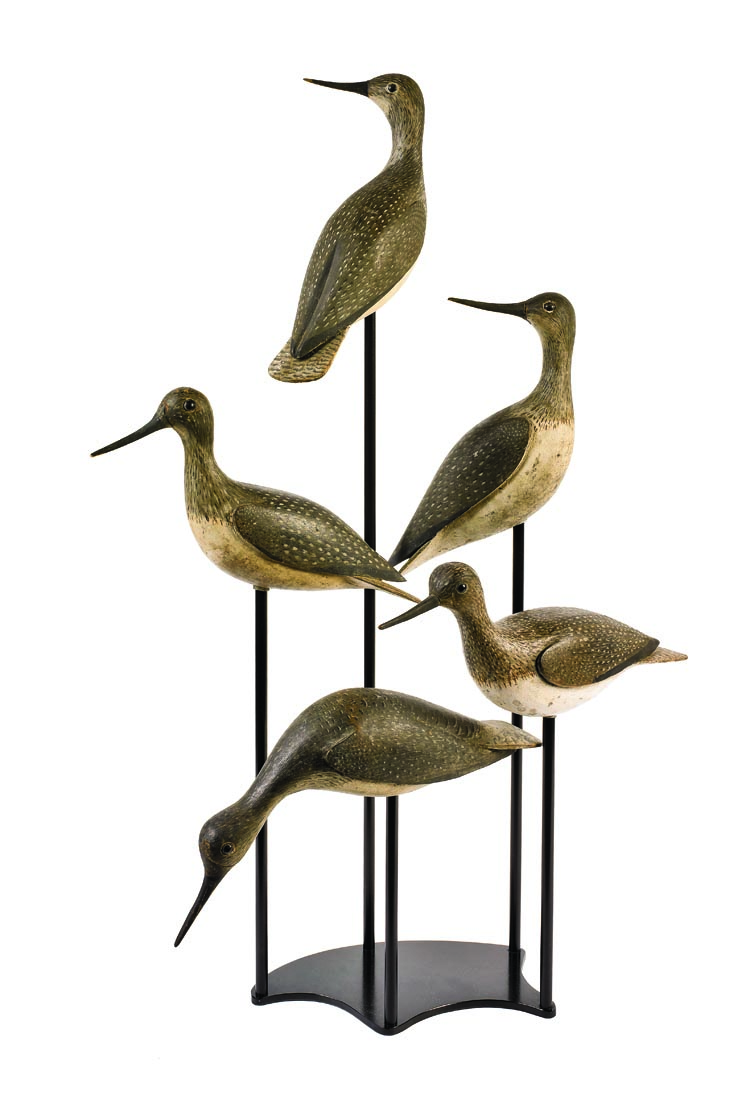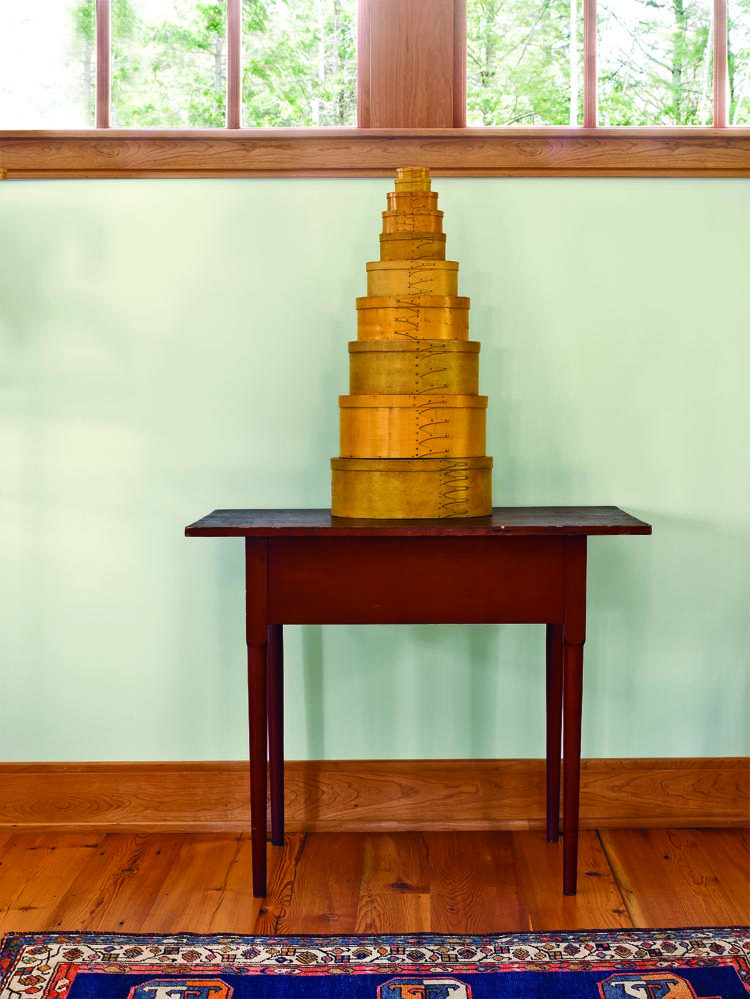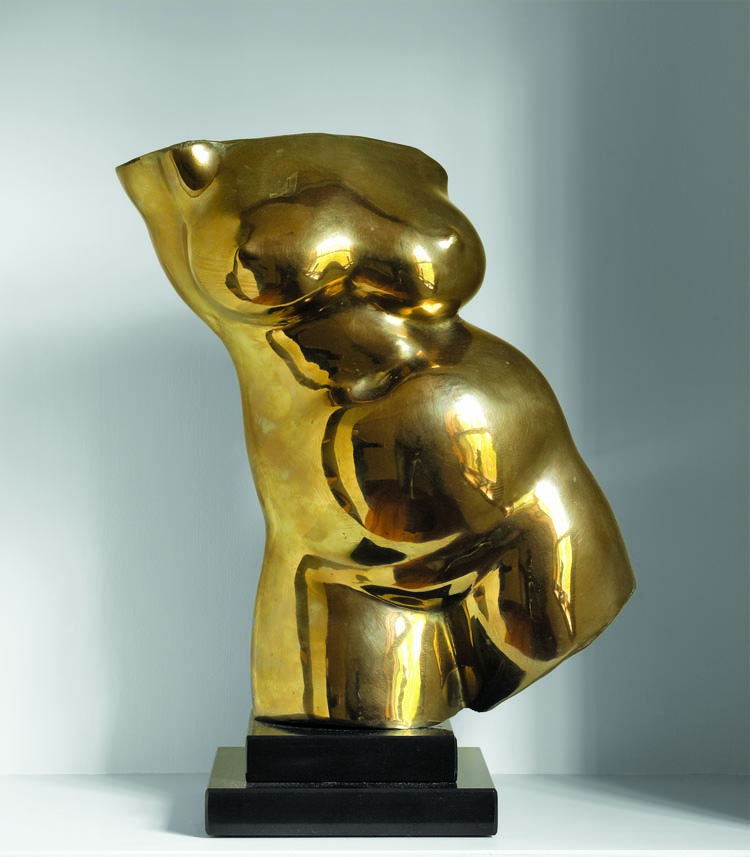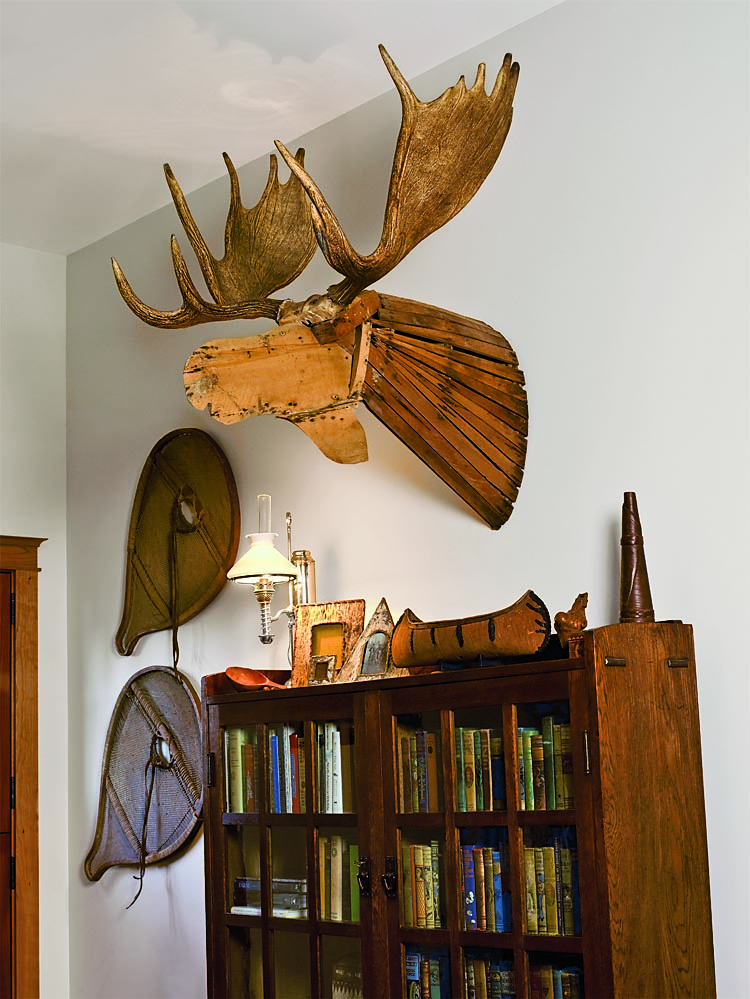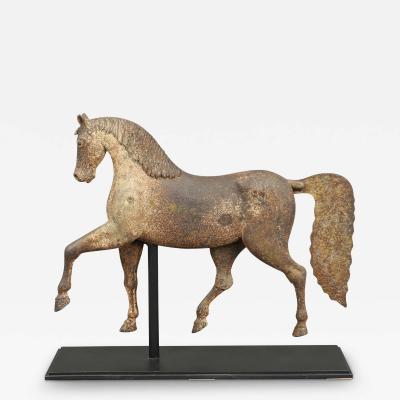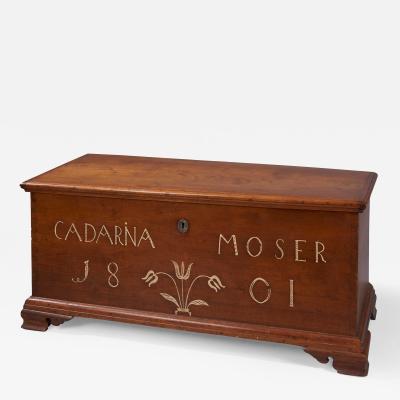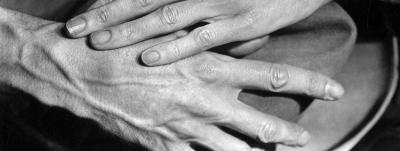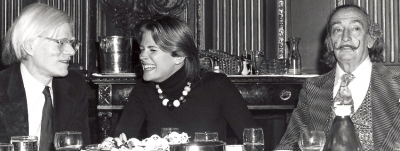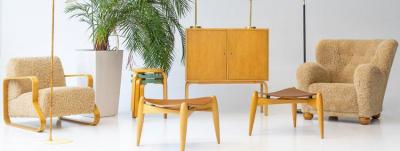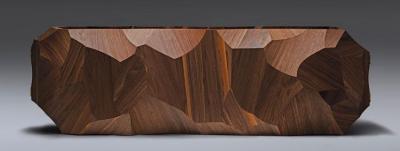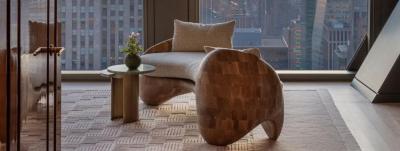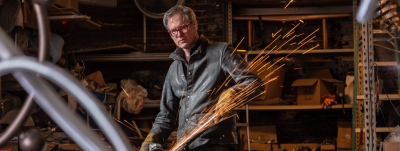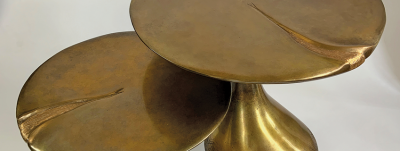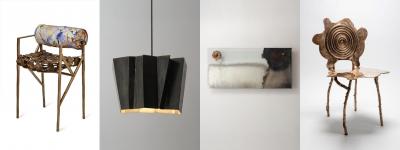Made In Maine
If you have ever driven to Maine, you will have been greeted by a sign: “Welcome to Maine, The Way Life Should Be” as you cross state lines. Having lived in the Pine Tree State for nearly a decade, the owner of this collection couldn’t agree more. “My parents used to take my siblings and me to Maine when we were young and I have many fond memories of time spent in and around Phippsburg and Bath,” he recalls. “As an adult, I wanted to be near the ocean so my wife and I bought a place on Nantucket—but it just got too congested with cars and people.” He adds, “So we decided to look for a less populated coastal property. We went to Essex, Connecticut, and drove north. Every time we could turn right, we did, so that we hugged the coast. We wanted to acquire some acreage for privacy and didn’t find a large undeveloped parcel until we got to Maine.” A number of years ago he decided to make the state his permanent home, and has never regretted it.
Situated on a ridge overlooking a cove, the property takes advantage of the scenic beauty for which the state is known—rocky shoreline, rolling vistas, and white pine forests valued since colonial times for their vast timber reserves. When the owner acquired the property, it had been on the market for eleven years; the land was nothing but trees and ledge along the water. He started clearing the view, cutting trails, and rebuilding stone walls from fallen rocks (always a vigorous local “crop”); utilities were buried underground so as not to disturb the sense of wilderness. “We originally planned to build a full-size retirement house but when my wife relocated to the West, I moved into what was then to be the guest cottage, which perfectly suits my needs.”
Though he did not require more room for himself, there was the matter of where to display the collection acquired through the years. Despite having sold much of the material in a series of auctions, he was able to retain his favorite objects and art. While some of the collection was placed in the cottage, he did not want a cluttered space, preferring to give the objects and paintings room to breathe. He also wanted a dedicated area for entertaining and for guests. The solution was not to build an addition, but rather a separate structure within walking distance of the cottage. The owner looked through magazines for inspiration but found nothing that appealed to his interest in history. He turned to Earle Shettleworth of the Maine Historic Preservation Commission. Earle suggested he join him at the Maine State Historical Society to look through original plans for period carriage houses. Of those they examined, the owner selected drawings for a 1904 structure in South Portland. The collector worked with an architect and the two decided to retain the large doors that opened on two sides but nixed the stalls and harness room, instead opening up the space to one large main room, with smaller rooms skirting one side and more private spaces upstairs.
The architect created the second floor plan and the owner focused on designing an open kitchen along the end overlooking the water. He chose not to have cupboards above the counters; thereby keeping the walls free for the display of artwork. When it was time to fill the extensive main room the owner invited dealers John Sidelli and Pat Garthoeffner to join him. The collector placed what had been in storage in the center of the room. “John and Pat just started placing things,” he recalls. “It was as if I had collected for the space because there was a home for everything.”
Among the objects displayed in the carriage house is a Maine drake eider decoy acquired from Fred Giampietro within the last few years. “I started collecting decoys in the 1960s,” says the owner. “They were the first thing I collected with passion.” Recalling this period, he says, “My parents brought my wife and me a duck decoy from the St. Lawrence River when I was attending graduate school. I promptly refinished it and put it on a table in our apartment.
A hunting companion came by one day and, from the doorway, recognized it as a Chauncey Wheeler (1862–1937) bluebill.” (Wheeler, a river captain from Alexandria Bay, carved decoys for the St. Lawrence river hunters.) He adds, “I was amazed that someone could recognize the maker and species just by the raw form.” When his friend remarked on what a shame it was that someone had refinished the decoy, the owner got his first lesson in what not to do as a collector. Hungry to learn more, he visited his friend’s decoy collection and was hooked.
“I would place ads in the classified sections of country papers: ‘Reward. Will pay top cash dollar for old wooden duck decoys.’ Everybody reads a reward notice.” When a call came, the owner would get into his old Ford Falcon and pay two to five dollars for each one, keeping the best and selling the rest to decorators. “They were piled around our apartment like cordwood,” he says. He then met dealer Norma Bury of Morrisville, New York, and famed Syracuse Lacrosse coach Roy Simmons, both a collector and an artist. The two sparked his interest in other folk art categories and so he sold most of his decoys, kept the best, and moved on to weathervanes, stoneware, portraits, and more.

- When taking some back roads with his mother one day the owner slammed on the brakes when he saw this weathervane on top of a building. Upon investigation, he learned that the vane, which had been given the name of Uncas, after the Mohegan Indian sachem (1588–1682), was placed on the local Congregational church (afterwards a town hall and presently a grange hall) in 1904. Arranging with the grange master to examine it for possible purchase, with proceeds going to restore the building, the owner and Pat Bell, from Olde Hope Antiques, rented a truck with a boom and basket to take a look. The collector purchased it, worked through a couple of lawsuits from those who wanted it retained, and had a reproduction made for the hall.
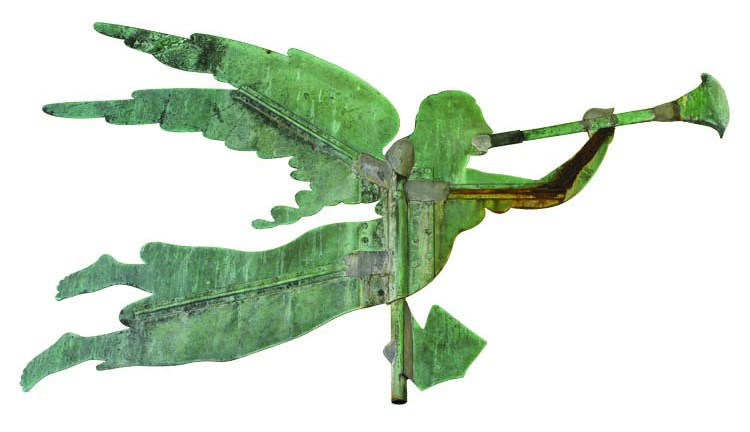
- This large Gabriel weathervane is of plate copper, iron, and lead, circa 1840. It is attributed to Gould and Hazlett of Boston, Massachusetts, based on a note found inside the three-dimensional horn of an identical example on the Newburyport Congregational Church in Massachusetts. This example was originally placed atop the First Baptist Church in Belfast, Maine.

- The high walls of the carriage house offer an ample display area for the superb redware collection. Though he has collected redware from various sources, the owner is most proud of the highly coveted Ron and Penny Dionne collection, all sixty-seven pieces of which he was able to acquire. Those shown are the Maine examples. Says the collector, “I didn’t understand New England redware at first; but when you start really looking at the forms and glazes you realize the complexity and sophistication of the colors, from greens to purples and pinks.” The owner almost did not purchase the pair of A. Ellis portraits because they were so dirty. He purchased them on faith and fortunately his conservator found a way to remove the homemade varnish to reveal their striking colors.
For a decade, the owner and his wife lived in the Midwest, far from the hub of the folk art world; most of the owner’s collecting was done long distance from ads in periodicals. Those ads and the phone calls that ensued led to relationships with a select group of dealers from whom the owner bought material, learned a great deal, and with whom he remains friends. That group includes Marna Anderson, Patrick Bell and Ed Hild, Gary Cole, Fred Giampietro, Alan Katz, Jerry Kornblau, Joel and Kate Kopp, George Schoellkopff, Stephen Score, John Sideli, and Don Walters and Mary Benisek.
The focus of the collection is extraordinary folk art: choice examples of portraiture; Maine redware; weathervanes; carved and painted accessories, or “smalls,” as they are often called; decorated furniture; and, of course, the decoys. Most of the material is from New England, particularly Maine. Describing his definition of folk art, the collector refers to a pair of snow shoes with decorated tassels displayed on a wall (unusual for his collection because they are likely from Michigan): “They are a classic form of folk art—purely utilitarian, yet here the maker went the extra mile to elevate them from simple utility to a thing of beauty and artistic expression.” In reference to items such as snow shoes, he advises, “Here is a category that not too many people collect, so you can buy the “best of kind” for what you’d pay for a less-than-average piece in a more conventional folk art category.”
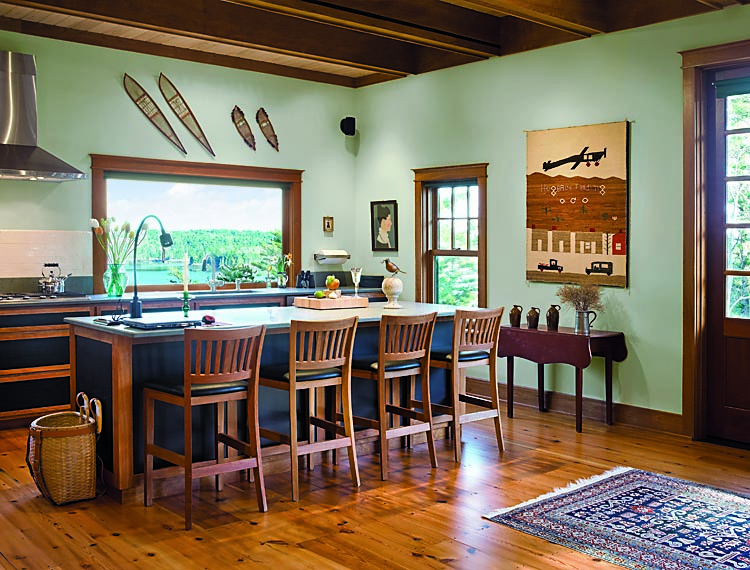
- The owner designed the open kitchen, perfect for cooking and entertaining. As a color scheme for the kitchen and first floor, he chose a light green found in nature, which plays off the Munson, Maine, slate countertops and fireplace mantel, and the river stones used along the fireplace wall. The ceiling boards are pickled cherry. A carved robin with a worm in its beak is perched on the center island. The owner had to buy a set of thirty carved birds just to get the robin. The circa 1920–1930 Navajo rug, hung on the wall as art, depicts a trading post. It hangs over a Maine red-painted table. In the corner is a profile of a woman in pastel crayon on paper, attributed to Ruth Henshaw Bascom, circa 1835–1840. After the image was purchased, dealer Don Walters turned over the separate sheet of backing paper, which had faded to gray-green, to reveal the original striking blue color.The owner designed the open kitchen, perfect for cooking and entertaining. As a color scheme for the kitchen and first floor, he chose a light green found in nature, which plays off the Munson, Maine, slate countertops and fireplace mantel, and the river stones used along the fireplace wall. The ceiling boards are pickled cherry. A carved robin with a worm in its beak is perched on the center island. The owner had to buy a set of thirty carved birds just to get the robin. The circa 1920–1930 Navajo rug, hung on the wall as art, depicts a trading post. It hangs over a Maine red-painted table. In the corner is a profile of a woman in pastel crayon on paper, attributed to Ruth Henshaw Bascom, circa 1835–1840. After the image was purchased, dealer Don Walters turned over the separate sheet of backing paper, which had faded to gray-green, to reveal the original striking blue color.

- “I love watercolors,” says the collector, “and I was drawn to this example because of the sitter’s dramatic persona and the manner in which his hand is draped over the painted chair.” It is of a group currently associated with a “Mr. Wilson.” The jazzy paint-decorated stand is from Sandy River Valley, Maine, circa 1830. A hollow merganser, by Oscar Bibber (1882–1971) of South Harpswell, Maine, faces the carved bird dog. “I have hunting dogs,” says the collector, “and I thought the face on this figure was so sweet that I had to have it; I love the way she looks up at you.”

- One of two sets of carriage house doors offer entry to the owner’s 1955 pre-A Porsche Speedster. The owner located this example in California through an antiques trade paper and bought it, fingers crossed, sight unseen. Fortunately it was in pristine condition. It was originally painted blue, a rare color for the model, which the owner recreated. Behind the car is a Maine paint-decorated chest, carved John Haley Bellamy (1836–1914) eagle, Kittery, Maine, and a carved striped barber pole. The ladder-back chair is attributed to the Fussel/Savery shop, Philadelphia, circa 1750.
The focus of the collection is extraordinary folk art: choice examples of portraiture; Maine redware; weathervanes; carved and painted accessories, or “smalls,” as they are often called; decorated furniture; and, of course, the decoys. Most of the material is from New England, particularly Maine. Describing his definition of folk art, the collector refers to a pair of snow shoes with decorated tassels displayed on a wall (unusual for his collection because they are likely from Michigan): “They are a classic form of folk art—purely utilitarian, yet here the maker went the extra mile to elevate them from simple utility to a thing of beauty and artistic expression.” In reference to items such as snow shoes, he advises, “Here is a category that not too many people collect, so you can buy the “best of kind” for what you’d pay for a less-than-average piece in a more conventional folk art category.”
As to the portraiture, the collector speaks to the qualities of line, color, overall aesthetics, and often the quirky nature of the images, which make them so endearing. Of those in his collection, he notes the exceptional qualities of a group of four miniatures, likely a family, by the Puffy Sleeve Artist, an unknown individual working between 1830 and 1831; most examples of the artist’s work have been found in Maine, Vermont, and New Hampshire. Typically for this artist, the dress, hands, accessories and hair are painted, with the shape of the head cut out and backed by a piece of black fabric; three of the four retain their original rope-carved frames and the boy and girl are depicted in full figure, which is quite rare. “They are extraordinarily depicted,” says the collector. “And are fun because the children are “Trayloresque” (speaking to the works of Outsider artist Bill Traylor) in how they are standing on top of bizarre animals; the creature with the girl has a forked tail with a tree extending from its mouth topped by a squirrel. If this were full-scale it would be one of the most important folk images in American portraiture.”

- The Porsche shares space with folk art, here, playfully showing an alternate mode of transportation to the horse and sulky, depicted as a weathervane; of unusually large scale, notes the collector. The New England corner cupboard was deaccessioned from a museum years ago. Its embellishments of scrolled top and columns, together with decorative paint within and without, create a visual stunner. The painted blanket chest is probably Vermont. The carved Indian bust is attributed to Samuel Robb (1851–1928) of New York.

- The examples of modern sculpture in this room are by Aristede Maillol (1861–1944) (on bedside stand), Elie Nadelman (1885–1946), and William Zorach (1887–1966) (on the window sill). A birch bark and cedar log carrier attributed to Joseph Nicholas of the Passamaquoddy Tribe in Princeton, Maine, circa 1900–1930, also shares the room with a folk ship portrait of the battleship Maine, dated 1904. A landscape by the owner’s grandfather hangs on the further wall.
“The rig of shorebirds in the cottage is my favorite thing,” notes the collector. “One day John Sidelli called to tell me of a group of shorebird decoys in several different poses that he found from a house sale in Binghamton, New York. I told him they had to be fakes because no one would ever carve such a group as working decoys. John bought them, however, because he was convinced they were real; when I later saw him at a show he took out some photographs of the birds. I had to sit down. They were incredible,” the collector recalls. “John told me he had put some of them up at auction and I immediately asked him to withdraw them; the catalogue had already been printed. I purchased them all.” The collector eventually sold all but five yellow legs. “They are the absolute best,” he says. “All the bills are original, the wings are carved, they retain their full tails and paint, have not been waxed, and the range of stances is unique. They are truly a masterpiece.”
The quality the collector finds so appealing in the shorebirds, and in other folk objects in his possession, he also sees in modern sculpture, which he has been acquiring for a number of years. The works to which he is particularly drawn are those by Elie Nadelman (1885–1946), of which he has the most examples; Alexander Archipenko (1887–1964); William Zorach (1887–1966), who, with his artist wife Marguerite, owned a farm on Georgetown Island, Maine; and Gaston Lachaise (1882–1935). “Nadelman collected American folk art because he appreciated the purity of the form, its simplicity, and directness, and the fact that it was created by craftsmen generally with no artistic training but who were indeed artists.” He adds, “That crossover for me is relevant and, as such, I find the works compatible with folk sculpture.”
The discerning selection that the collector has spent years acquiring and refining has resulted in a spectacular and well-orchestrated enviroment that brings him obvious joy and satisfaction. Though space is limited, he continues to acquire, and like most collectors, there is always room for one more special object or artwork.
This article was originally published in the Summer 2012 issue of Antiques & Fine Art magazine, a digitized verson of which is available on www.afamag.com. AFA is affiliated with Incollect.com


